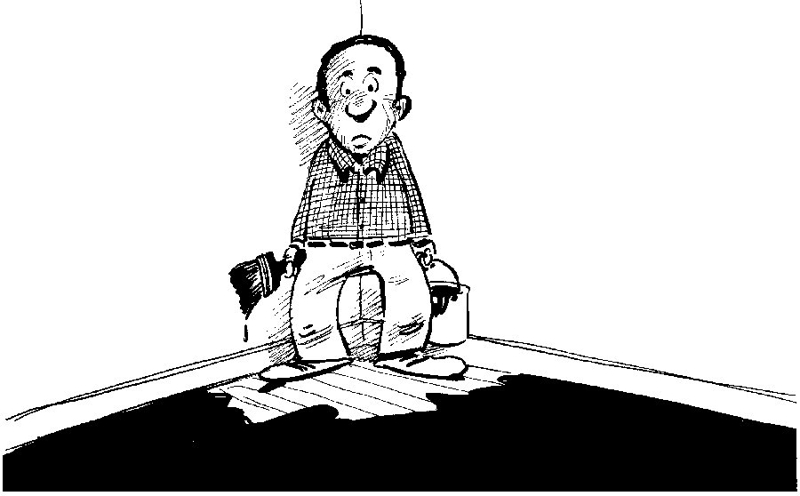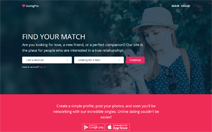How To Go Through 1001 User Interviews And Get Cool Insights
Interviews are an important method in product research. Generative methods (interviews or focus groups) create knowledge, and evaluative (usability tests) test hypotheses. When the interview is conducted qualitatively, we can find out
- what the user is thinking about;
- about his views;
- his model of thinking;
- his experience.
This knowledge helps us to create products and services that will solve the real problems of users, and not invented by us. Having spent a lot of time talking with users, you can understand something that you yourself would never have guessed, even if you constantly carry out usability testing.
At the same time, poor interviews lead to poor decisions that can do great harm to the company and its customers. An excellent UI (user interface) will not save you if you develop features that nobody needs.
In this article, we will talk about the most common mistakes in conducting user interviews and how to avoid them.

Problem: Wrong Goal
Sometimes people try to get information from an interview that, in fact, cannot be obtained this way. Here are some examples:
- Which color will best affect the user experience of the product/company?
- Why will people buy or use our product in the future?
- What features do users need in a product?
Answers to these questions cannot be obtained by communicating with users, this is more about user behavior. Interviews cannot provide any reliable information on this subject. If you are interested in what features are needed by clients or how a green icon affects the use of a specific tool, try observing users.
Let’s look at an example. The designer wants to understand what background color is best for the application. She shows mockups to users and asks which one they like best. Such a statement of the question in advance assumes that at the output you will receive false data. And here are a few incorrect assumptions:
- Respondent likes a certain color. The question “What color does the user prefer?” Implies that he has an opinion on this (which may actually non-existent). By asking such a question, you make the user think and form an opinion.
- The user’s answer to a question about color correctly reflects his true feelings. It is possible that some users will really prefer the blue background over the purple one, but this does not mean at all that leaving the interview they will not change their mind.
- User color preferences affect the overall impression of the product. Even if users like or, conversely, don’t like the color of your website or application, this does not affect the perception of the entire product. The background is just one of many factors that contributes to the whole UX.
Solution: choose a research method based on the subject of research
The subject of the study should determine which method you will use. If you want to know how the user will interact with the interface, you should watch him, and not interview him. If you want to know the user’s impressions or past experience, there is no better way than to conduct an interview.

Problem: Poor Planning
Many people think that they will just come for an interview and along the way will find out everything that is needed. Too presumptuous.
You will just waste respondents’ and your own time, and even worse, you will have absolutely useless information on hand.
When you conduct an interview without preparation, you:
- get yourself muddled in questions and make hasty conclusions;
- ask superficial, suggestive and closed questions that do not reveal the user.
Solution: schedule and rehearse the interview
Be sure of what you want to know. After you formulate your research questions, create an interview guide that will keep the conversation in check while communicating with respondents. The guide should contain some well-written questions. Their goal is to reveal the user and simplify the research.
Most often, the questions used in UX research are there to help reveal subject areas and experience. Examples of such questions:
- Describe the day when …
- Tell us about the time, where …
- What would you like to change in a product if you had such an opportunity?
Prepare a list of non-guiding questions. Examples:
- Tell us more about this.
- Can you give an example of?
- Why do you think so?
Test your guide. First, run the interview on yourself to find out how you yourself would answer your questions? Even by asking yourself, you can understand that some of the questions do not work. Secondly, before you interview users, first agree on an interview with one. Do not tell him that it was a trial version. After the first such interview, you will immediately understand what is worth improving.
Make a realistic schedule. Interviews take more energy than you might think. If you have many respondents, do not forget to meet one after another. Do not forget about the breaks. Otherwise, with each subsequent conversation, the quality of the received data will decrease due to banal fatigue. 2-3 interviews a day is more than enough.

Problem: Poor Analysis
After you conducted the interview, all the data you get needs to be analyzed, and when there were not five, but thirty respondents, there is a lot of information and it becomes difficult to work with it. This, in turn, leads to the fact that:
- Only memorable insights are documented and analyzed. Many important things are not taken into account.
- The written conclusions acquire an emotional color. It is very easy to agree with the conclusions that were previously assumed.
Solution: systematic analysis of transcribed interviews
Record an interview
If you intend to conduct many interviews, you should record them. Even if you a person who can write really fast, you still can lose sight of something in a live conversation. Most respondents are not opposed to being recorded. By the way, always warn that you are recording.
Decrypt the interview in text
Analyzing the interview text is much more convenient than relying on memory or looking for the right information in the recorder. The longer you analyze the data, the less unfinished conclusions. There are services that transcribe audio, so you won’t spend too much time on it.
Connect team
Connect the team to data analysis. This is a great way to increase empathy for users.
- Plan for the team to read the notes and highlight important points.
- Remind the team of the main research questions.
- Make sure all team members familiarize themselves with each interview.
- After you complete all the steps, together with the team (or yourself) go back to the records with the main insights already highlighted and try to group them into groups with similar characteristics.
Upgrade your interviewing skills
Interviewing users is not easy, you need to learn and practice. To improve the interviewer’s skill, try to take notes after each conversation with the respondent: which of the questions was unsuccessful, that you can improve the questions, how to behave better, etc.
Ask a colleague you trust to listen to the interview notes and give you constructive feedback. The process will take some time, but it’s really worth it. You may not notice certain mistakes when communicating with the respondent, but someone will quickly notice it from the outside.
The more time you spend analyzing your work: notes, text, intonation, the sooner you can pump it to the master level.





